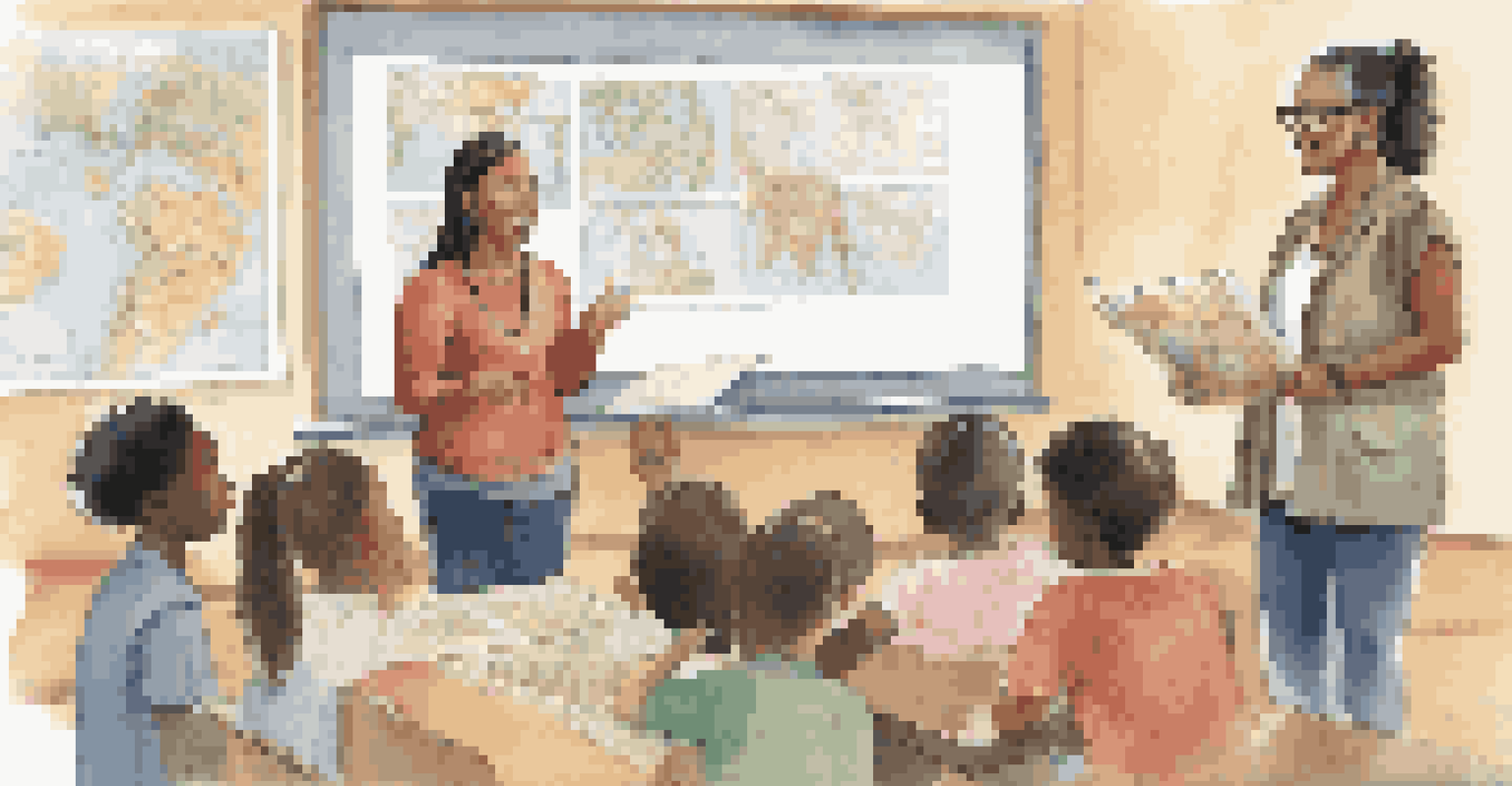Creating an Inclusive Curriculum for Diverse Learners in Blended

Understanding the Importance of Inclusivity in Education
Inclusivity in education means recognizing and valuing the diverse backgrounds, abilities, and needs of all learners. Creating an inclusive curriculum ensures that every student feels represented and engaged in their learning journey. This approach not only enhances academic performance but also fosters a sense of belonging and community within the classroom.
The function of education is to teach one to think intensively and to think critically. Intelligence plus character – that is the goal of true education.
When educators embrace inclusivity, they acknowledge that each student comes with unique perspectives and strengths. This recognition can transform the learning environment, making it more dynamic and enriching for everyone involved. Moreover, an inclusive curriculum prepares students for the real world, where diversity is the norm rather than the exception.
Ultimately, inclusivity encourages collaboration and empathy among students. By celebrating differences, educators can cultivate a classroom culture that respects individual experiences while promoting collective growth. This foundation is essential for creating a blended learning environment where all learners can thrive.
Identifying Diverse Learning Needs in Your Classroom
Diverse learners encompass a variety of backgrounds, including different cultural, linguistic, and cognitive experiences. To create an effective inclusive curriculum, educators must first identify the unique needs of their students. This process can involve surveys, discussions, and assessments to gather insights into each learner's strengths and challenges.

Once educators understand the diverse needs within their classroom, they can tailor their curriculum to accommodate different learning styles. For instance, some students may excel with visual aids, while others thrive on hands-on activities or auditory instructions. By incorporating a mix of instructional strategies, educators can create a more engaging and effective learning experience for all.
Embrace Diversity in Education
Inclusivity in education fosters a sense of belonging and enhances academic performance by valuing diverse backgrounds and needs.
Furthermore, recognizing the diverse needs of learners helps to foster a supportive environment. When students feel their individual needs are acknowledged, they are more likely to participate actively in their education. This sense of ownership can enhance their motivation and overall academic success.
Integrating Technology to Support Diverse Learners
In today’s digital age, technology plays a crucial role in creating inclusive curricula. Blended learning environments can leverage various tools and platforms to address the diverse needs of learners. For example, educational apps and online resources can provide personalized learning experiences that cater to individual strengths and challenges.
Diversity and inclusivity are not just buzzwords; they are the keys to a richer learning experience and a more compassionate society.
Moreover, technology can facilitate collaboration among students with varying skill levels. Tools like discussion boards and collaborative documents allow learners to work together, share ideas, and learn from one another in a supportive setting. This not only enhances understanding but also builds a sense of community, which is vital for diverse groups.
By thoughtfully integrating technology into the curriculum, educators can create a more flexible and responsive learning environment. This adaptability empowers students to engage at their own pace, fostering independence and confidence in their abilities.
Designing Culturally Relevant Learning Materials
Culturally relevant learning materials play a pivotal role in fostering inclusivity. By incorporating texts, examples, and resources that reflect the diverse backgrounds of students, educators can help learners connect more deeply with the content. This relevance not only enhances engagement but also affirms students' identities in the learning process.
For example, using literature from various cultures or discussing historical events from multiple perspectives can enrich classroom discussions. When students see themselves represented in the curriculum, they are more likely to feel valued and motivated to participate. This sense of belonging is essential for effective learning.
Utilize Technology for Inclusion
Integrating technology creates personalized learning experiences, allowing educators to meet the diverse needs of all students.
Additionally, culturally relevant materials can challenge stereotypes and promote critical thinking. By exposing students to diverse viewpoints, educators can encourage open-mindedness and empathy, essential skills for navigating our increasingly interconnected world.
Encouraging Collaboration Among Students
Collaboration is a cornerstone of inclusive learning. Creating opportunities for students to work together fosters teamwork and communication skills while embracing diversity. Group projects and peer-to-peer learning can be particularly effective in blended learning environments, where students can leverage both face-to-face and digital interactions.
When students collaborate, they learn from each other's perspectives, which can deepen their understanding of the material. This exchange of ideas not only enhances academic outcomes but also builds interpersonal relationships, creating a supportive classroom culture. Moreover, students often feel more comfortable sharing their thoughts in a collaborative setting.
Encouraging collaboration also allows educators to observe group dynamics and identify any challenges that might arise. By actively facilitating discussions and providing guidance, teachers can ensure that all voices are heard, promoting an inclusive atmosphere where every student feels empowered to contribute.
Implementing Flexible Assessment Strategies
Assessments should reflect the diverse abilities and learning styles of students. Traditional testing methods may not accurately capture the strengths of all learners, especially those with different backgrounds or learning needs. To promote inclusivity, educators should consider implementing varied assessment strategies that allow students to showcase their knowledge in multiple ways.
For instance, instead of solely relying on written exams, educators can incorporate presentations, projects, or even digital portfolios. These alternatives can provide students with the opportunity to express their understanding creatively and authentically. Flexibility in assessment encourages students to engage more deeply with the content and promotes a growth mindset.
Build Supportive Learning Communities
Fostering strong relationships among students and educators promotes inclusivity and encourages active engagement in the learning process.
Moreover, by providing options for assessments, educators can reduce anxiety and create a more supportive environment. When students feel comfortable demonstrating their knowledge, they are more likely to succeed, leading to a more equitable learning experience.
Building a Supportive Learning Community
Creating an inclusive curriculum is not just about the materials and methods used; it’s also about fostering a supportive learning community. Building relationships among students and between students and teachers is crucial for promoting inclusivity. When learners feel connected, they are more likely to take risks and engage actively in their education.
A supportive community encourages open dialogue and mutual respect, allowing students to express their thoughts without fear of judgment. This safe space can enhance collaboration and learning, as students feel valued for their contributions. Educators can cultivate this environment through team-building activities and regular check-ins with students.

Additionally, involving families and the wider community can strengthen this support network. By engaging parents and caregivers in the educational process, educators can create a more holistic approach to learning. This collaboration emphasizes the importance of inclusivity and helps to reinforce the value of diverse perspectives both in and out of the classroom.